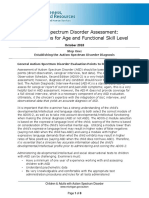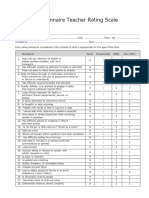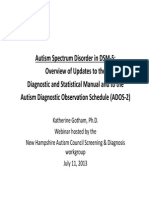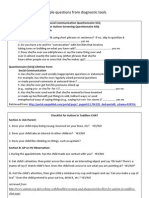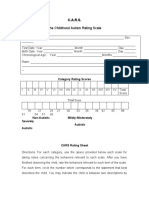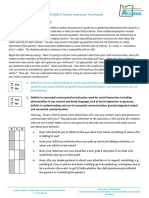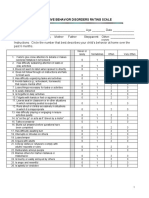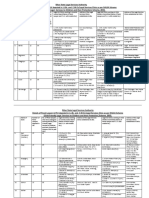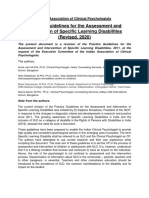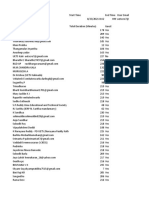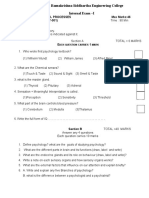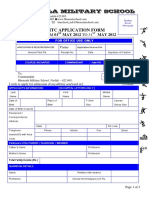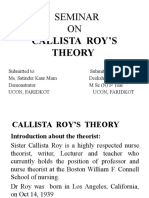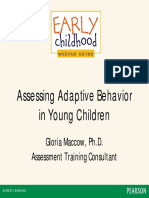100% found this document useful (1 vote)
2K views12 pagesSample ASD Team Report Format
The evaluation team conducted assessments to determine if a student qualifies for special education services under the category of Autism Spectrum Disorder. Testing included parent and teacher interviews, observations, and standardized assessments. The team's evaluation addressed the three criteria required for an ASD eligibility determination: impairment in social interactions, impairment in communication, and restricted/repetitive behaviors. Based on the comprehensive evaluation, the team determined that the student [does/does not] meet the criteria for an Autism Spectrum Disorder eligibility. The team enjoyed working with the student and is available to answer additional questions.
Uploaded by
ravibhargavaraamCopyright
© © All Rights Reserved
We take content rights seriously. If you suspect this is your content, claim it here.
Available Formats
Download as DOC, PDF, TXT or read online on Scribd
100% found this document useful (1 vote)
2K views12 pagesSample ASD Team Report Format
The evaluation team conducted assessments to determine if a student qualifies for special education services under the category of Autism Spectrum Disorder. Testing included parent and teacher interviews, observations, and standardized assessments. The team's evaluation addressed the three criteria required for an ASD eligibility determination: impairment in social interactions, impairment in communication, and restricted/repetitive behaviors. Based on the comprehensive evaluation, the team determined that the student [does/does not] meet the criteria for an Autism Spectrum Disorder eligibility. The team enjoyed working with the student and is available to answer additional questions.
Uploaded by
ravibhargavaraamCopyright
© © All Rights Reserved
We take content rights seriously. If you suspect this is your content, claim it here.
Available Formats
Download as DOC, PDF, TXT or read online on Scribd
/ 12

